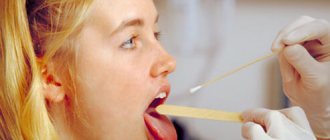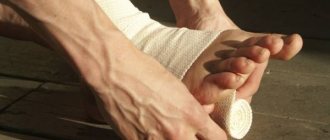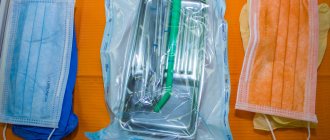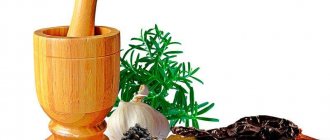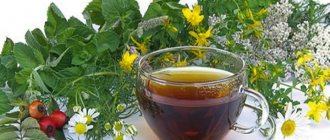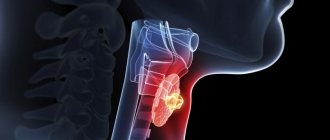Stinging nettle is a common weed that has found application in the treatment of diseases of the gastrointestinal tract, respiratory system, and manifestations of rheumatism. For the time being, all gardeners are trying to get rid of the pest in their plots. But as soon as illness knocks on the window, they immediately remember the healing plant.
For some reason, the popular names of nettle indicate only its negative properties: stinging, stinging, stinging. They are silent about its healing properties. Nettle leaves are most often used as a medicine, although sometimes the whole plant with rhizome and stem is used, and the fruits are often used.
The burning healer is a great gift of nature
The large number of cancer cases scares people more than other diseases. “Weed” is used as an auxiliary treatment for oncology of almost all human organs.
Juice is especially useful. You can drink it 1 tsp. twice a day, without avoiding the main treatment.
You can prepare an infusion:
- dried herb - 7 g;
- boiling water - 200 ml.
After steaming for half an hour, the infusion can treat cancer of the lungs, skin, and stomach. Take 1 tbsp. three times a day.
Calendula, nettle and celandine for the treatment of cancer. These three herbs are the strongest fighters against the growth of metastases.
Important! Every traditional cancer treatment requires consultation with an oncologist and testing of herbs for allergies.
Infusion recipe:
- combine 2 tbsp. dry nettle, celandine and calendula flowers;
- take 1 tbsp of the mixture, pour 200 ml of boiling water, leave for 2 hours;
- drink in the morning on an empty stomach
You can take 1 tbsp. l. before meals three times a day for 14 days, then there is a break and repeat treatment for 14 days. Many patients alternate treatment with alcohol tincture of celandine.
How to prepare nettle root for treatment
Traditional medicine offers several algorithms for processing nettle root. Each of the medicines has strong healing properties.
How to prepare and make a decoction of nettle roots
Nettle decoction is the most popular remedy. It retains maximum beneficial properties, does not take much time to prepare, and can be used internally and externally.
The recipe looks like this:
- the dry root of the plant is crushed in the volume of a small spoon;
- pour the raw material with a glass of hot liquid;
- keep in a water bath for about 15 minutes;
- filter through cheesecloth.
You need to drink 200 ml of nettle root medicine up to four times a day.
Nettle decoction can be used to treat inflammation on the skin.
Tincture of nettle roots with vodka
The alcohol tincture of dried roots has high medicinal value. Traditional medicine offers the following recipe:
- 100 g of dry raw materials are placed in a glass jar;
- pour 1 liter of vodka and shake;
- put in a cool, dark place for two weeks;
- After the time has elapsed, filter.
We recommend reading: Chamomile: beneficial properties and contraindications, how to brew
Use the product in small dosages, no more than 5 ml three times a day. The tincture can be used to treat cuts and healing burns.
Nettle tincture is used for rinsing, diluting it with water in equal proportions.
Nettle root extract
Nettle root extract, or its undiluted juice, has the highest concentration of valuable substances. To prepare the product you need:
- thoroughly rinse the fresh rhizomes of the plant from contamination;
- cut the raw materials into small pieces;
- Grind into a paste using a blender or meat grinder;
- Squeeze out the clear liquid through folded cheesecloth and a sieve.
The undiluted extract is drunk three times a day, a small spoonful along with a small amount of water. The product helps with fever and cough, anemia and bleeding. Bandages soaked in the plant extract can be applied to ulcers, burns, cuts and bedsores.
Important! Nettle extract can be purchased ready-made at the pharmacy. Dosages of use remain the same, no more than 40 drops at a time.
You can prepare a powder extract from dried nettle roots by grinding the raw material in a blender
A burning beauty for women
Many women value this plant for its ability to improve hair condition and promote hair growth .
The juice is rubbed into the scalp, and the hair is rinsed with the infusion: 3 tbsp. spoons of dry raw materials per cup of boiling water, leave for a quarter of an hour, rinse your hair.
To enhance hair growth and strengthen it, fresh nettle is useful: 0.5 kg of raw material is poured with 3 cups of boiling water and allowed to brew for 6 hours.
Gynecology is another area of application of the herbaceous plant. If you have heavy menstruation or feel unwell during menopause, then use the “services” of a burning beauty.
To get results, drink the decoction in courses:
- 2 tbsp each mix yarrow and hot greens; take 1 tbsp. mixture, boil for 1 minute in a glass of water;
- let sit for 40 minutes.
Drink 1 tbsp. during the day.
If your hair is falling out a lot, then rinse it with a decoction of “zhguchka”.
Douche if fungus occurs in the genital area. Douching will help cure many women's diseases.
If your heart is naughty, then drink a decoction of young nettle with honey or sugar :
- cut off the tops of the plant, dry in the shade, chop;
- take 5 tbsp. spoons of raw materials;
- pour 0.5 liters of water, boil for a minute over low heat;
- drink 0.5 cups 4 times a day.
You can drink the same decoction for stomach pain, 2 tbsp. until the pain disappears, gastritis can also be cured.
Nettle decoction in cosmetology
Nettle decoction is also successfully used in cosmetology. After washing your hair with detergent, rinse the strands with it. B vitamins contained in the decoction strengthen hair. Vitamin C gives hair shine and silkiness. The minerals that make up the plant help strengthen them and reduce fragility. Regular rinsing with nettle eliminates split ends and stimulates hair growth.
Nettle decoction is no less useful for skin, especially problem skin. You can simply wipe your face with it several times a day, or mix it with liquid honey in a 1:1 ratio and apply it to your face like a mask. These procedures eliminate acne and make facial skin clean and beautiful.
Nettle - an ancient remedy
In the old days, healers used the fresh juice of the plant to destroy stones in the human body. You should drink 1 large spoon of juice every 2 hours. The destroyed stones must leave the body. But there is a danger of clogging of the ducts, then surgery cannot be avoided.
People with diseased kidneys were recommended to drink a decoction with honey: brew 1 teaspoon of dry raw material with a cup of boiling water. For nephritis and pyelonephritis, you need to brew 1 large spoon per 1 cup, then simmer for 15 minutes in a water bath. To heal the kidneys, you need to take a third of a glass before meals.
To improve health, increase vitality, improve heart function, overcome sclerosis, and reduce cholesterol in the blood, it is recommended to make a vodka tincture:
- pick 200 g of spring nettle;
- pour 0.5 liters of vodka, tie the neck with gauze;
- keep in the light for a day, then put in a closet for 8 days;
- squeeze, filter, store in a dark bottle.
Drink 1 teaspoon in the morning 30 minutes before meals and 1 teaspoon before bed. Drink the entire composition. Do not forget about contraindications: pregnancy, thrombophlebitis and thick blood.
Treatment of joints
There are many good nettle-based recipes for joints. The burning plant contains formic acid, vitamins, and histamine, which successfully cope with joint pain.
Recipes for the treatment of arthrosis:
- Take 2 tbsp. l. nettle leaves, parsley root, elderberry flowers, oak bark, mix everything. Then pour 1 large spoon of the mixture into 200 ml of boiling water, boil for 5 minutes. Drink 1 glass in the morning and evening.
- Take weed greens and horseradish root in equal proportions. Butter is added to the crushed ingredients. Apply the resulting ointment to the sore areas and apply a bandage.
Osteochondrosis can also be treated with herbaceous plants. Fill the bath with hot water, pour in the nettle infusion, and soak for 15 minutes.
A very effective remedy: mix 300 g of hot medicine juice with 0.5 liters of honey. Take a large spoon before each meal. If allergies are accompanied by skin rashes, then hives can also be treated with this mixture. You just need to take 1 tsp. after meals 3 times a day.
To treat the musculoskeletal system, prepare nettle brooms. In the bathhouse, whip yourself with healing brooms to banish joint pain and pain in the spine.
Nettle treatment
The beneficial properties of nettle are used in the treatment of a wide variety of diseases of almost all body systems. The form in which the herb will be used depends on the specific pathology. Stinging nettle is used to prepare decoctions, tinctures, juice or syrup. Each of them is taken according to a specific scheme, so that the course of treatment has a truly positive effect.
For liver diseases
To treat liver diseases, nettle is used in the form of decoctions. They can have different concentrations, so the cooking recipes also differ:
- Steam 1 tablespoon of leaves with a glass of boiling water and boil for 1 minute. Infuse the product for about half an hour. Take 1-2 tbsp after each meal.
- Prepare 2 tbsp. dry raw materials, pour a glass of boiling water, then simmer for another 15 minutes in a water bath. When finished, let stand for 1 hour, strain and drink 100 ml before each meal.
For joint diseases
To relieve joint pain, it is recommended to use a tincture. To prepare it, use the following instructions:
- Take a glass jar and fill it with leaves without compacting it. Pour enough vodka on top so that it covers all the grass to the top. Leave for 12 days in a dark place, shake periodically. Use before bed for rubbing and compresses.
- Pass enough leaves through a meat grinder to make 4 tbsp. juice Next add 4 tbsp to it. port wine, 2 tbsp. birch sap and 4 ice cubes. Divide the resulting cocktail into 2 servings to drink throughout the day.
For stomach ulcers
In case of exacerbation of gastric ulcer or gastritis, treatment with nettle infusion is indicated. You can prepare it in different ways:
- Pour 1 tbsp with a glass of boiling water. fresh leaves, simmer them in a water bath for about 10 minutes, cool until warm. Use 1 tbsp before meals. up to 4 times during the day.
- Mix mint, St. John's wort, knotweed and nettle in equal proportions. About 4 tbsp. Pour the resulting mixture with a liter of boiling water and leave for a couple of hours. Take a teaspoon of the product 4 times a day before each meal, diluting with 100 ml of water.
For dandruff
In cosmetology, in case of hair loss, weakening and dullness or dandruff, it is very useful to rinse your hair after washing with nettle infusions . They are prepared according to the following recipes:
- Pour a bunch of dried or fresh herbs with cold water and boil for 3-5 minutes over low heat. Cool to a comfortable temperature, then rinse your hair with the broth after shampooing.
- Pour 2 tbsp into a container. crushed leaves, add half a liter of boiling water. Leave the product for half an hour, then pour in 5 tbsp. vinegar and strain the solution. Rinse your hair with the broth every evening, then wrap it until completely dry.
From heel spurs
To treat heel spurs, medicinal baths or night compresses are recommended. Recipes:
- Pour a small amount of water into 2 tbsp. starch, add 2 tbsp. dried nettles. Fill the container with 2 liters of hot water. Soak your feet in the resulting mixture for 15 minutes, then wipe and roll a small elastic ball with your feet.
- Take May nettle and pass it through a meat grinder. Next, put the resulting pulp on a burdock leaf, make a compress from it on the sore spot, secure with a bandage and leave overnight. Repeat the procedures for 2 weeks.
For nervous diseases
Nettle infusion stimulates the nervous system. The following options for preparing such a remedy are considered more effective:
- Wash and dry the young shoots of the plant, chop them finely and put them in a jar. Pour in cold boiled water and cover with gauze on top. Let it brew for 10 hours at room temperature. Use 0.5 tbsp. up to 3 times a day.
- Take a tablespoon of nettle seeds and add a glass of water. Boil the mixture over low heat for 10 minutes. Let stand for 1 hour, then add a spoonful of honey. Drink half a glass of the product before bed.
To boost immunity
There are several recipes for folk remedies to strengthen the immune system. Among them, the following receive especially good reviews:
- Take about 200 g of young nettle, add half a liter of vodka or 70% alcohol to it. Wrap a cloth around the neck of the jar, leave it on the windowsill for a day, then put it in a dark place for 8 days. Strain, take 1 teaspoon on an empty stomach half an hour before breakfast and another one before bed.
- Mix raisins, nettles and rose hips in equal parts. Take 2 tbsp. means, pour 2 cups of boiling water, boil for another 10 minutes. After 4 hours, strain. Drink half a glass up to 4 times a day.
To thicken the blood
It is useful to add this plant to soups, main courses and salads. In spring and summer, the following recipes can be used to thicken the blood:
- Take the nettle stem and leaves, rinse and dry, then grind through a meat grinder. Squeeze the juice and take several spoons a day.
- Prepare 1 tbsp. dry herb, add a glass of boiling water to it, leave for a couple of hours. Next, strain and take 3-4 tbsp. during the day.
For radiculitis
In the treatment of radiculitis, this herb is often used externally as compresses and rubbing. For this purpose, products based on this plant are prepared as follows:
- Wash and dry fresh nettles, then finely chop and place in a half-liter jar. Fill it to the brim with vodka, then put it in a cool, dark place for 3 weeks. At night, rub the problem area with the prepared product.
- Take a few nettle leaves, wash and dry them, then chop and mix with hot capsicum and petroleum jelly in a ratio of 2:1:1. Rub the resulting ointment onto your lower back up to 2 times a day. The course of treatment lasts until the pain disappears completely.
Nettle for hemorrhoids
Hemorrhoids can be cured with simple folk remedies. Thanks to its astringent properties, the pungent plant copes with the manifestations of internal and external hemorrhoids. Treatment with a decoction will help reduce inflammation, prevent bleeding, and help resolve knots.
It is recommended to do sitz baths and micro enemas . For the bath, take half a glass of the dried plant and add a liter of water. Keep on fire for 10 minutes, pour out a bowl of hot water. Sit in the basin for a quarter of an hour. The same decoction can be used to make microenemas.
How to preserve nettles
Dried nettles should be stored in a well-ventilated area for no more than 2 years. An excellent storage option would be paper bags or products made from natural materials.
nettle leaves
Nettle: medicinal properties and contraindications. The stinging leaves contain large amounts of ascorbic acid. Leaf-based infusions and decoctions effectively cope with skin problems and also enhance the activity of the cardiovascular and respiratory systems. Nettle leaf tea helps with anemia, nervous disorders, cough, bronchitis or shortness of breath.
Nettle root
Nettle: medicinal properties and contraindications. Syrup from nettle roots will help activate liver function and normalize bile secretion, as well as improve appetite. Taking this syrup will help improve the functioning of the gastrointestinal tract. By stimulating the production of interferon, the body is protected from viruses.
Nettle seeds
With the help of nettle seeds, you can significantly strengthen your erection, as well as save a man from prostate adenoma. The main therapeutic indications for taking drugs based on nettle seeds:
- problems with the female monthly cycle,
- presence of swelling,
- bleeding of internal and external organs,
- performance problems,
- chronic fatigue.
Contraindications
Any medicinal plants have a number of contraindications. It is not recommended to use nettle-based preparations for the following diseases:
- hypertension,
- cyst,
- undergoing therapy based on medications for insomnia or antidepressants,
- increased blood clotting,
- intolerance to this plant,
- thrombophlebitis,
- severe kidney disease,
- atherosclerosis,
- varicose veins,
- first trimester of pregnancy.
Treatment of skin diseases
A unique plant even treats psoriasis:
- Pick nettle leaves along with flowers - 50-60 g, put in a thermos.
- Pour 1 liter of boiling water.
- Drink half a glass three times a day.
- This elixir can cure many chronic skin ailments.
An effective collection for psoriasis: take equal parts of burdock roots, nettle greens, licorice, string, calamus, and mix everything. Take 1 tbsp. mixture, pour a cup of boiling water. Simmer the infusion on the fire for 10 minutes, then let it brew for 40 minutes. Drink 100 ml one hour before meals.
Preparation of a burning healer
When to collect herbs for treatment? Nettles are harvested from early May to mid-July. The most useful is May nettle. It is necessary to collect in sunny weather, always wearing gloves. You can dry the twigs by laying them on a cloth in the shade. The raw materials must be turned over more often to ensure even drying.
To make harvesting nettles for the winter successful, you can tie the branches into bunches and hang them in a ventilated, dark room. Drying time - 2-3 weeks
Can be dried in the oven at a temperature of no more than 45 degrees, with the door open. Dry for 2 hours, then turn over and dry again.
Well-dried nettle leaves easily break down into powder. The raw materials are stored in hanging canvas bags or in boxes for 1 year.
When collecting, you can get burns from nettles, so you need to wear gloves.
Description of the plant
Stinging nettle (photo) is known in Latin as Urtica dioica. This is a member of the nettle family (Urticae). The plant is perennial, undemanding to environmental conditions: it can grow in both dry and humid climates, mainly in dark corners, often in thickets.
It is found throughout the forest-steppe zone, and can often be found in the mountains. The weed has spread throughout Eastern and Central Europe, in Asia Minor and partly in Central Asia.
Young individuals can reach from half a meter to one and a half meters in height. The stem is fleshy, when cut, it is in the form of a polyhedron. The leaves are elongated, heart-shaped at the base, placed oppositely, and have stipules. The leaves are covered with hard hairs that constantly secrete burning substances. Nettle flowers are inconspicuous, greenish, collected in a panicle inflorescence.
Medicinal properties
Let's look at the medicinal properties and uses of stinging nettle. The beneficial properties of nettle have been known for a long time.
The chemical composition of stinging nettle is very diverse, containing formic acid, tannins, and many vitamins (the largest amount of vitamins K, E, A and C). It is deservedly considered a multivitamin plant.
However, preparations from nettle rhizomes are considered more healing than those from its leaves.
The most common types of nettle are Urtica urens, or stinging nettle, and Urtica angustifolia, or narrow-leafed nettle. In traditional medicine recipes, the former is more often used due to its higher content of formic acid.
This nettle produces a richer essence. This same type of nettle is considered the best for treating rheumatic diseases.
Interesting facts about stinging nettle
This herb, despite its stinging property, is one of the best culinary plants. In traditional Russian cuisine, young nettle leaves are common ingredients in soups (cabbage soup, green borscht).
In spring, it serves as a surprisingly rich source of vitamins and microelements. In Caucasian cuisine, nettle is used raw in salads, as a seasoning for meat dishes and in the form of pickles.
The chemical percentage composition of stinging nettle includes: crude proteins about 23%, of which pure protein - 17%, fats - 3%, cellulose - 37%, non-nitrogenous compounds - 23%, ash - 18%, starch - 10%, vitamin C - 15%. The remaining elements - glucose, iron salts, potassium - about 1%.
In cattle breeding, nettle is used as feed for cows and pigs. It is believed that nettle leaves improve milk production in dairy cows, and also improve its quality, making it fattier. Nettles are also often used as bird food and stored for the winter. Its consumption by chickens increases egg production.
Since the times of ancient Greece and Rome, stinging nettle has also been used, the medicinal properties of which were already widely known. Legionnaires of Julius Caesar practiced stabbing themselves with nettles during their campaigns, as it has a powerful warming effect.
In collections of recipes of Ancient Rus', the plant is found as a remedy for the treatment of wound infections.
In dermatology, a certain type of rash is called "urtica", or "urticaria", which is associated with the Latin name for nettle - Urtica. The mechanism of occurrence of this type of rash in skin diseases is identical to the mechanism of nettle burn.
Root treatment
The roots are dug up after flowering and dried in the shade.
To get rid of viruses in the body and cleanse the blood, it is worth treating with the roots of the weed.
Here is a small list of ailments for treatment: ulcers, worms, boils, anemia, bronchitis, diabetes, asthma, impotence.
Recipe for osteochondrosis: pour 1 kg of roots with a bottle of vodka, leave for 2 weeks in the cupboard, take 1 tbsp. l. before bedtime. Rub the tincture on sore areas and massage.
Treatment of bronchitis: 1 tbsp. l. pour 300 ml of boiling water over the roots, evaporate by a third in a water bath. Take 1 tbsp three times a day. l. before meals.
Asthma: 1 tbsp. l. roots for 1 cup of boiling water, cook for 5 minutes. Drink 1 cup.
The roots of the weed have found application in medicine due to their antitumor effect: Prostaforton and Bazoton. "Urtifilin" is used to heal wounds and treat burns.
"Allohol" also contains nettle extract.
The use of nettle in folk medicine
In spring, nettles and dandelions are one of the most useful plants on our table. Nettle treatment with folk remedies has been used for many years. List of uses in folk medicine:
- to strengthen hair (with severe hair loss, baldness, seborrhea and early gray hair); Alternate nettle with burdock.
- a good diuretic (edema, kidney stones and even for rheumatism);
- as a supporting agent in the treatment of severe forms of diabetes;
- to boost immunity after respiratory and intestinal infections (flu, poisoning);
- to restore the hematopoietic system in case of iron deficiency anemia, heavy bleeding, atherosclerosis and to normalize the menstrual cycle;
- for blood purification in case of allergies;
- to optimize the functioning of the digestive system in diseases of the gastrointestinal tract and duodenum (ulcers, gastritis, cholecystitis, etc.).
How to improve your vision
The simplest solution is to cook soups, borscht with nettles, and put it in salads. To improve your vision, you can use the following recipe:
- 1 tbsp. l. dried nettle, pour 200 ml of boiling water, leave for 1 hour;
- strain, take 1/3 cup three times a day. Course – 3 weeks;
- a month break and the course can be repeated.
Finally, if there are no contraindications, then folk treatment with nettle will help get rid of many diseases. Be attentive to your feelings when using decoctions or infusions!
Recipe
Now let’s discuss how to prepare a nettle decoction , be it a purchased plant or the leaves you collected:
- Pour one tablespoon of leaves into 0.2 liters of water;
- Boil;
- Leave to sit under a towel for an hour;
- Strain and cool.
We also recommend: Walnut: benefits for men
How to drink nettle decoction for various diseases?
For anemia and weakened immunity, 50 ml before each meal;- For impaired blood clotting, 200 ml per day, divided into four equal doses;
- For diabetes mellitus, a glass daily;
- If you have skin problems, take a glass a day orally or to wipe the affected areas with a cotton pad;
- For external and internal bleeding, 4 glasses daily;
- To combat obesity and speed up metabolism, it is enough to drink 50 ml daily (in four doses);
- To strengthen your hair, wash it with liquid every morning;
- To normalize the functioning of the nervous system and improve sleep, you need to drink a glass a day, dividing it into small portions.

